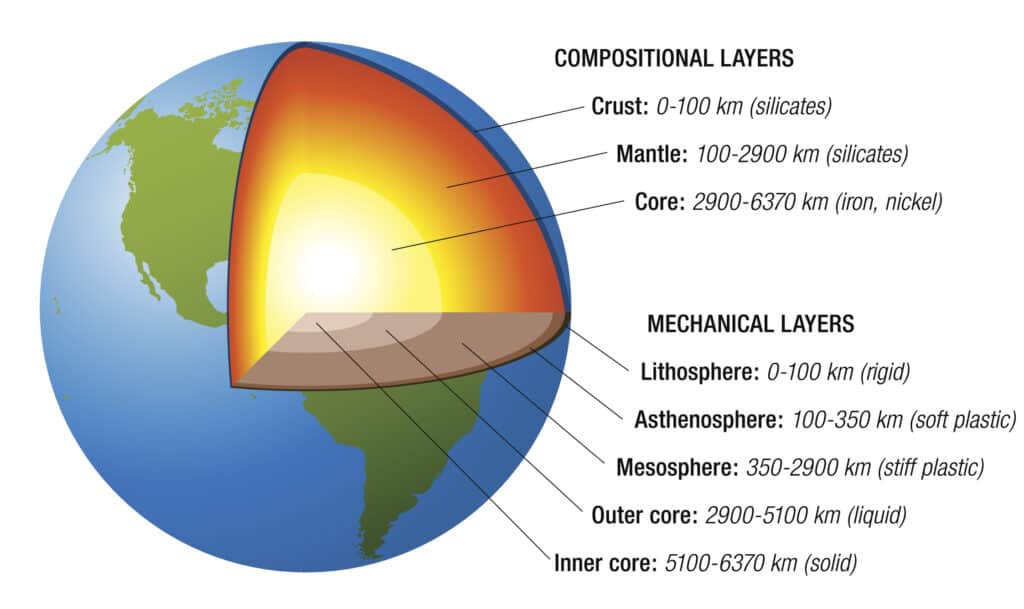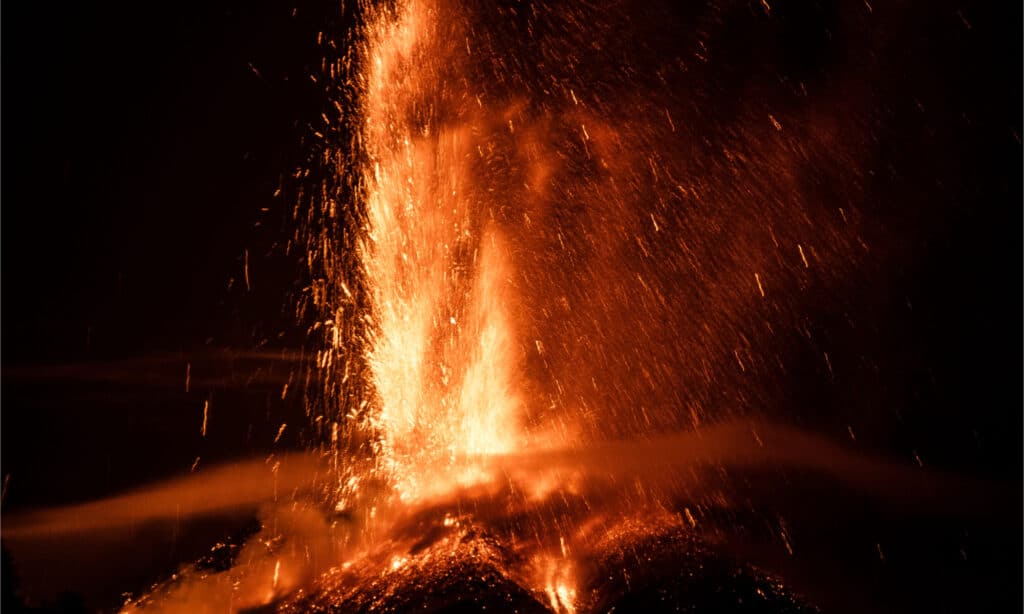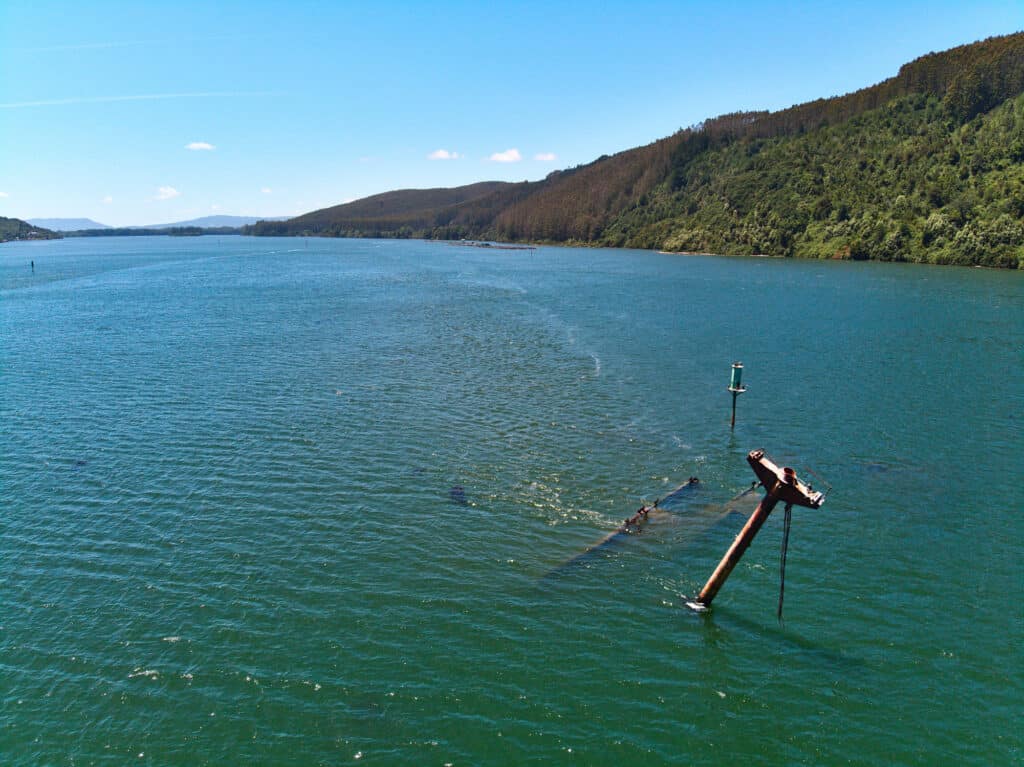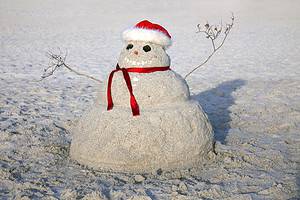An earthquake is defined as “a sudden shaking of the ground, sometimes causing great destruction, as a result of movements within the earth’s crust or volcanic action.” But what exactly causes the earth’s crust to move and why does it happen? In this post, we’ll take a closer look at earthquakes, what causes them, and why they happen. Read on to learn more.
What Makes Earthquakes Happen?
In order to understand how earthquakes happen, we must first understand where they take place. Earthquakes happen below the surface of the earth’s crust which consists of four distinct layers. The layers include a solid crust, the mantle, an outer core, and an inner core. You also have an important region called the Lithosphere. This region consists of the crust and the top layer of the mantle. The lithosphere is not one continuous layer, it is actually made of many large pieces of earth, almost like puzzle pieces, called tectonic plates.
These tectonic plates are constantly moving and shifting above the mantle layer of the earth, which is continuously flowing. This movement can cause a buildup of stress on the earth’s crust, which can lead to the development of cracks known as fault lines. When the earth’s crust suddenly moves at one of these fault lines, an earthquake is produced. This is where you get the sometimes violent shaking that can be felt on the earth’s surface.

Earthquakes occur when tectonic plates shift below the earth’s crust.
©iStock.com/PeterHermesFurian
What Are Tectonic Plates?
Tectonic plates are giant slabs of solid rock that are located beneath the earth’s surface. As we mentioned above, they are a part of the lithosphere. Not all of the earth’s tectonic plates are the same size, in fact, they can vary dramatically. Some of the earth’s tectonic plates are only a few hundred kilometers wide, while others can be thousands of kilometers. The Antarctic and the Pacific plates are the two largest on the planet. Even the thickness of the plates can vary dramatically. Some of the thinnest tectonic plates can be less than 15 km thick. This usually applies to the younger oceanic lithosphere, while some plates can be up to 200 km thick, which is generally reserved for the more ancient plates of the continental lithosphere. Both North and South America (the interior) have tectonic plates that match this size.
So then the question becomes, “how do these massive tectonic plates move around when they must weigh so much?” This can be answered by looking at the composition of the plates. What are they made of? The continental crust is made up of granitic rocks which consist of a few different types of lightweight minerals. Some examples of these minerals include feldspar and quartz. In comparison, the oceanic crust consists of basaltic rocks, which are a lot heavier than the minerals in the continental crust. Since these two types of crust vary so much in their thickness and density, the differences in plate thickness help balance it out. Since the rocks that make up continental plates are much lighter, the plates beneath them are much thicker. And in contrast, the crust beneath the oceans is much thinner, at only about 5 km. Continental crusts are just like icebergs, being that you don’t see the full scale of them. Continents have much deeper layers that extend far beneath the surface to help support the higher elevations they have.
Earthquakes and Volcanic Activity
In most cases, you won’t see where the tectonic plates meet because they are located beneath the ocean. Despite this, the plate boundaries can still be seen from outer space thanks to instruments like the GEOSAT satellite that helps map out the boundaries. Usually, where these tectonic plates meet, you will find a lot of earthquake activity and volcanoes. This is due to the amount of friction that happens there, as well as the built-up stress and pressure of the plates moving near each other.
Where there is volcanic activity, there is usually earthquake activity, and this is no exception when it comes to the tectonic plate boundaries. When a volcano erupts at one of the plate boundaries, the pressure that is associated with the force of the rising magma can trigger earthquakes to occur around the same site. On the other hand, an earthquake is also able to trigger a volcanic eruption at one of these sites as well. During a major earthquake, the crust movements and changes can cause cracks and fissures to form that can, later on, act as a pipeline for magma from a volcano. This is something that scientists are still researching to better understand how the process works over time.

Where there is volcanic activity, there is usually earthquake activity.
©Wead/Shutterstock.com
How Are Earthquakes Measured?
Earthquakes are detected by a seismographic network of seismic stations. Each of these stations measures the movement of the ground at the site. When an earthquake happens, it releases energy that makes the ground vibrate as rocks move over one another. These vibrations continue to push the ground, allowing the energy to travel outward in a wave of vibrations. The seismograph stations pick up on these vibrations, even when subtle, and measure them as an earthquake with a specific magnitude. Let’s take a closer look at what goes into determining an earthquake’s magnitude.
An earthquake’s magnitude can be looked at as the measurement of the earthquake’s size. It’s a measurement that tells the size of the earthquake at its source and stays the same regardless of where you were or what the shaking felt like at your location. You may have heard of the Richter scale when it comes to determining the size of an earthquake, and while this method was once the main way to measure an earthquake’s magnitude, it is now outdated and no longer in use by the USGS for larger earthquakes. The USGS now uses the Moment Magnitude scale in order to measure earthquake size within the most reliable estimate.
Do ‘Earthquakes’ Happen on Other Planets?
Despite the name, quakes do happen on planets besides earth. Scientists have been able to detect measurable seismic activity on places like the moon, Venus, Mars, and a few of Jupiter’s moons as well. In fact, NASA took a seismometer to Mars to study the seismic activity on the red planet. They hoped to find out what the inside of Mars is made of. While there, the Mars lander detected the largest quake that has ever been observed on another planet—a magnitude 5. There have been over 1,300 quakes detected on Mars since InSIght landed there in November 2018.
What Is the Largest Earthquake Ever Detected?
The largest earthquake on record is the 1960 Valdivia earthquake, also known as the Great Chilean earthquake. It was a 9.4-9.6 on the moment magnitude scale. The earthquake was accompanied by a large tsunami that impacted southern Chile, Japan, Hawaii, the Philippines, eastern New Zealand, the Aleutian Islands, and southeastern Australia. The epicenter was located near Lumaco, and Valdivia was the most impacted city. The earthquake caused waves up to 82 ft (25 meters), and the death toll is uncertain but estimated to be anywhere between 1,000 and 6,000 people.
What Is a Subduction Zone?
A subduction zone is essentially the collision spot between two of the earth’s tectonic plates. Where the two plates meet, one of them will slide beneath the other and curve downward into the mantle. In most cases, at a subduction zone, the oceanic crust will be the one that sinks into the mantle versus the continental crust. This is because as we mentioned before, oceanic crust is much denser than continental crust. The denser, heavier crust, will sink at the subduction zone and go beneath the continental crust, which is lighter. Sometimes, when a layer of oceanic crust is old enough, it can collapse by itself and spontaneously form a new subduction zone.
Sometimes, two identical types of crusts may collide with one another. For example, if two continental crusts collide together, they may do so without forming a subduction zone, meaning that neither crust will sink below the other. Instead, the two crusts will crash together and rise, causing a mountain chain to form. The Himalayan mountain chain is thought to have formed this way when the continental crust of India collided with that of Asia.
Earthquakes and Tsunamis
Since subduction zones are usually located along the coastlines, tsunamis that are generated by them will always happen close to where people are living. When a large earthquake happens in a subduction zone, the rapid shift in the ocean floor causes the displacement of a tremendous amount of water. This giant displacement of water is what we know as a tsunami. This is usually the case for a subduction earthquake of at least a 7.5 magnitude or higher. Sometimes smaller earthquakes can generate small tsunami waves when the water is displaced, but these are generally small and do not cause a significant threat to life. However, when these larger ones occur, they can create much larger tsunami waves that can do a lot of damage and cause a great risk to life for those that are in its path. Not every subduction zone earthquake will trigger a tsunami, but those that do can cause great damage.

Canelos cargo ship sunken in Valdivia River due 1960 tsunami and earthquake that stroke southern Chile.
©iStock.com/Alexis Gonzalez
Up Next
- How a Massive Earthquake Split Tennessee’s Largest Lake from the Mississippi River
- Geyser vs Volcano: What’s the Difference?
- Discover the Largest Tsunami Known
The photo featured at the top of this post is © Inked Pixels/Shutterstock.com
Sources
- Space Place NASA, Available here: https://spaceplace.nasa.gov/earthquakes/en/
- Jet Propulsion Laboratory NASA, Available here: https://www.jpl.nasa.gov/news/nasas-insight-records-monster-quake-on-mars
- National Ocean Service, Available here: https://oceanservice.noaa.gov/facts/tectonics.html
- USGS, Available here: https://pubs.usgs.gov/gip/dynamic/tectonic.html
- Science Learning Hub, Available here: https://www.sciencelearn.org.nz/resources/654-plate-tectonics-volcanoes-and-earthquakes
FAQs (Frequently Asked Questions)
What is an earthquake?
An earthquake is an intense shaking of the Earth’s surface.
What are the three main causes of earthquakes?
Induced earthquakes, volcanic earthquakes, and collapse earthquakes.
How do earthquakes start?
Earthquakes usually start when rocks underground suddenly break or there is rapid movement at a fault line.
Thank you for reading! Have some feedback for us? Contact the AZ Animals editorial team.







